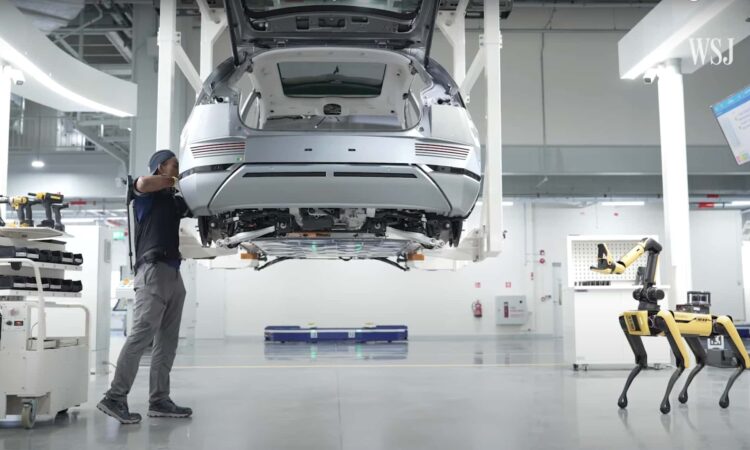Scenes inside Hyundai’s Singapore EV plant resemble that of some distant utopian future. Spot, the robot dog from Boston Dynamics walks around conducting quality checks, autonomous robotic arms meticulously screw bolts and install windshield wipers, and self-driving ground vehicles move components and EVs to different areas within the factory.
With so much autonomous hardware, human presence is unsurprisingly scarce. Sixty percent of the tasks are executed by robots, said one of our contributors who visited the plant in Singapore last month in an article on our sister channel Motor1.com. And only 100 workers are needed to produce 30,000 vehicles a year.
This is not your typical car factory. It’s a “microfactory,” the Wall Street Journal reported yesterday. It aims to reinvent manufacturing by building cars in a “cell” rather than along a traditional production line. Interestingly, Hyundai’s microfactory, as the name suggests, is far smaller than traditional car factories. (Watch the factory tour above)
For example, Tesla’s Gigafactory Texas has a floor space of more than 10 million square feet, roughly equal to 100 football fields, and has a capacity to build more than 250,000 EVs a year. Hyundai’s Singapore plant, one of only three manufacturing bases for the Ioniq 5 apart from South Korea and Indonesia, spans just 935,000 square feet, with an annual production capacity of 30,000 cars.
Typically, an assembly line is where a vehicle is put together step-by-step as it moves along a conveyor belt or a series of stations that specialize in a specific task, like installing the engine, the dashboard, or the seats. Humans and robots work in tandem to accomplish these tasks. Hyundai’s cell-based model isn’t vastly different fundamentally, but it allows more flexibility.
In the cells, robots install components of a car, before moving to the next zone. The key differentiator is that the cells can be programmed with specific instructions, right from installing components for different variants of the same car, or to working on a completely different model. Traditional assembly lines would need significant retooling for similar adaptability.
However, the Singapore plant is more of a technology showcase, and it seems tailored for urban areas where space is at a premium. It’s unlikely to revolutionize manufacturing anytime soon—especially not in the U.S. after a summer full of United Auto Workers strikes where workers voiced their fears over robots and AI taking their jobs.
It’s a legitimate concern, and especially jarring to know that a factory that can make 30,000 EVs a year employs just 100 people. Is Hyundai going to build more of these? Will others copy Hyundai? We don’t know yet. And we certainly hope not. But with the industry increasingly moving towards AI and automation globally to improve efficiency and reduce costs, it’s a space certainly worth keeping an eye on.
Source: Read Full Article
